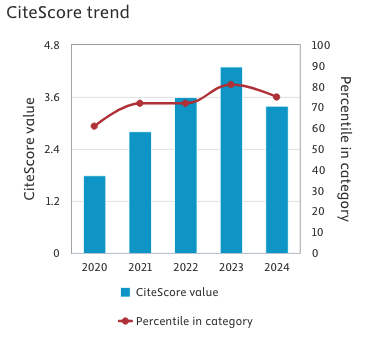Nephrotic syndrome leading to recurrent pulmonary embolism: A report of two cases
Recurrent pulmonary embolism in nephrotic syndrome
Keywords:
Anticoagulation failure, Nephrotic syndrome, Pulmonary embolismAbstract
.
References
2. Kazmi RS, Lwaleed BA. New anticoagulants: how to deal with treatment failure and bleeding complications. Br J Clin Pharmacol. 2011;72(4):593-603.
3. Eriksson BI, Borris LC, Dahl OE, et al. Dose-escalation study of rivaroxaban (BAY 59-7939) – an oral, direct Factor Xa inhibitor – for the prevention of venous thromboembolism in patients undergoing total hip replacement. Thromb Res 2007; 120: 685–93.
4. Kakkos SK, Kirkilesis GI, Tsolakis IA. Editor's Choice - efficacy and safety of the new oral anticoagulant’s dabigatran, rivaroxaban, apixaban, and edoxaban in the treatment and secondary prevention of venous thromboembolism: a systematic review and meta-analysis of phase III trials. Eur J Vasc Endovasc Surg. 2014;48(5):565-575.
5. Cohen AT, Hamilton M, Mitchell SA, et al. Comparison of the Novel Oral Anticoagulants Apixaban, Dabigatran, Edoxaban, and Rivaroxaban in the Initial and Long-Term Treatment and Prevention of Venous Thromboembolism: Systematic Review and Network Meta-Analysis. PLoS One 2015; 10(12): e0144856.
6. S. Schulman, M. Zondag, L. Linkins, et al. Recurrent venous thromboembolism in anticoagulated patients with cancer: management and short-term prognosis. J. Thromb. Haemost. 2015; 13(6): 1010-1018.
7. Pillai APA, Arvind Ra; Olujohungbe, et al. The management of recurrent VTE in cancer patients receiving therapeutic anticoagulation: the use of dual anticoagulant therapy combined with an IVC filter. Blood Coagulation & Fibrinolysis 2010; 21(8): 766-769.
8. Chintalacheruvu LM, Bhatty O, Andukuri VG. Dual Anticoagulation in Recurrent Thromboembolic Events with Failure of Monotherapy: A Novel Approach. Cureus. 2017;9(7):e1444
Downloads
Published
Issue
Section
License
Copyright (c) 2022 Mehul Agarwal, Krishna Kumar Sharma, Neha Bharti, Kunal Deokar

This work is licensed under a Creative Commons Attribution-NonCommercial 4.0 International License.
This is an Open Access article distributed under the terms of the Creative Commons Attribution License (https://creativecommons.org/licenses/by-nc/4.0) which permits unrestricted use, distribution, and reproduction in any medium, provided the original work is properly cited.
Transfer of Copyright and Permission to Reproduce Parts of Published Papers.
Authors retain the copyright for their published work. No formal permission will be required to reproduce parts (tables or illustrations) of published papers, provided the source is quoted appropriately and reproduction has no commercial intent. Reproductions with commercial intent will require written permission and payment of royalties.






